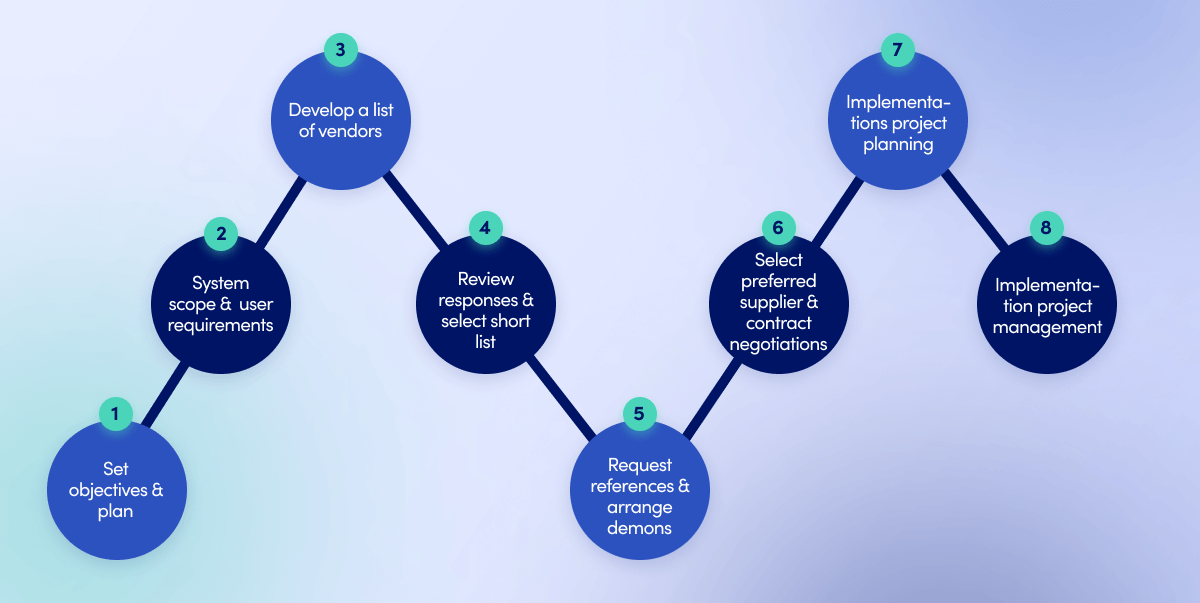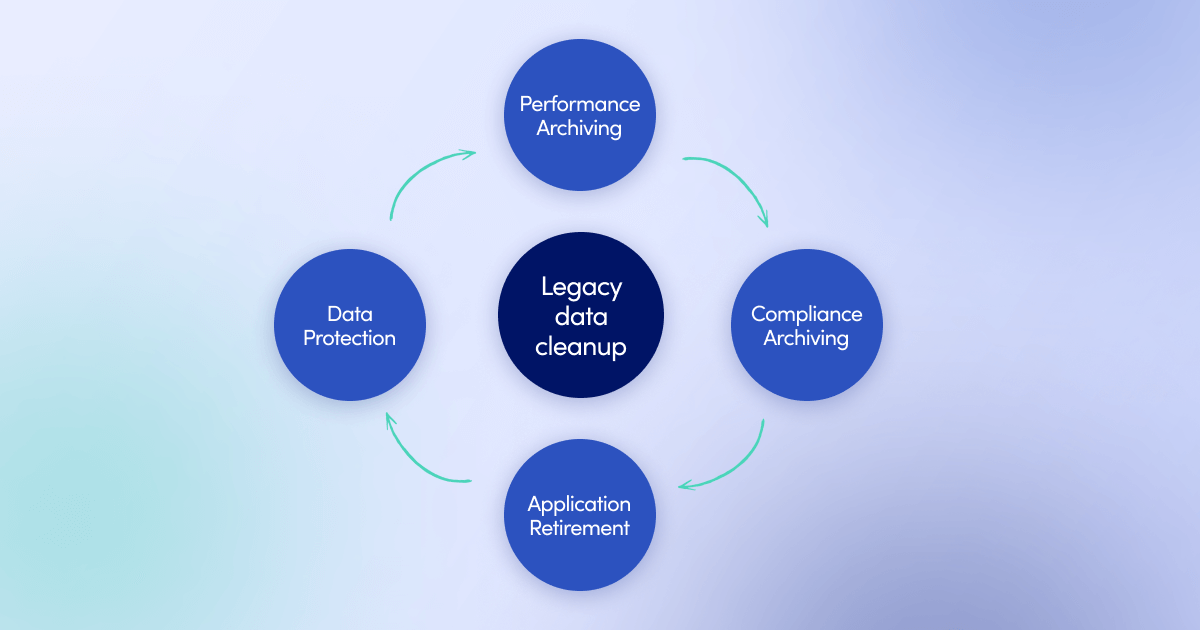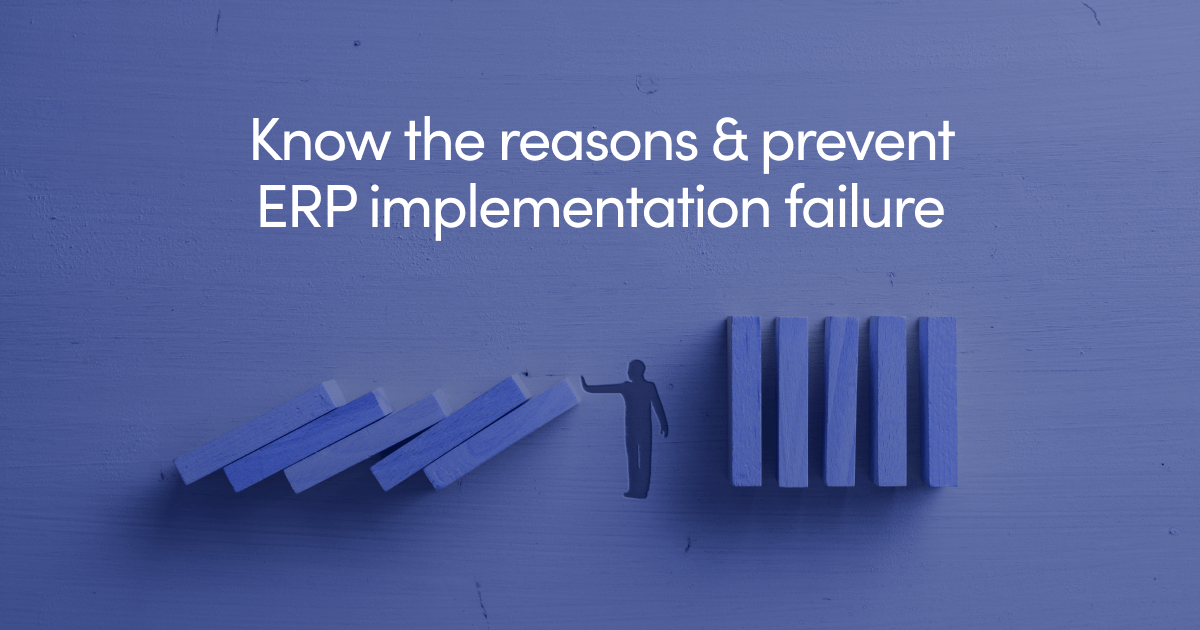60% of first ERP implementation fail and for any ERP implementation, the number of failed projects is 29% (2019, ERP Focus). Does that mean that those projects are doomed to backslide and the game is not worth a candle? Not necessarily. If all the parties involved work hard and are working with a plan, 81% of the projects met ROI (Return on Investment) expectations a year or more after go-live (2022, Panorama Consulting Solutions).
In the below article, we have been trying to share some knowledge on how to avoid your ERP project’s fiasco or – to be specific – how you can do it. We have identified the main reasons for ERP implementation failures and showed you ways to avoid them by implementing certain methods, ways of thinking, strategies and adequate tools.
When considering a new ERP system, it is worth answering the below questions first.
- Is your company able to talk honestly about potential difficulties when faced with complexities/ challenges?
- How are these challenges handled internally?
- Are people and processes flexible enough to achieve organizational goals?
- Are you aware of the change resistance, do you see it already?
- How do you plan to deal with it?

These questions – although the list is by no means exhaustive – will help you prepare the ground for talks about ERP implementation across your organization. Plus, if you combine this with knowledge on the most common causes for ERP implementation failures, you will be able to prevent these from happening and head towards a successful go-live and ever after. Let’s take a look.
Poor choice of the implementation partner
When looking for their implementation partner for ERP software, companies should consider technology knowledge, access to resources and experience is similar projects. However, what organizations are often not taking into consideration is the complexity of their new ERP system, numerous updates that will be required, system exploitation and also the application’s versality. And ultimately they end up with a partner that does not offer guidance or support and the service is reactive rather than proactive which – in the case of a modern ERP system – is simply not enough and might lead to ERP implementation failure. Companies overlook such characteristics as being able to help the business in achieving and sustaining the corrective parameters to meet their goals and requirements. And what happens then? The system build might be all OK but its maintenance and support – not necessarily. And this means that all the money put into the implementation project simply goes to waste.

How to go about it? Make sure that your implementation partner has the relevant experience in implementing ERP software. Ideally, also as an end-user with solid product knowledge. As you need to configure your ERP along the lines of specific business requirements, you also need to make sure that the chosen partner has on-hands industry experience (be it manufacturing, construction, etc.)
Lack of (inadequate) risk management
Proactive and honest. This is how risk management for ERP implementation projects should be like. For the best-managed scenarios, risk identification and mitigation are taken seriously by each party – both by the organization and the consulting partner. What moves the project forward is encouraging the team on both sides to raise their concerns and have honest discussions about these. If it is not happening, and, additionally, identified risk as treated as failures, teams are discouraged and are likely to set an oppositional relationship with each other.

Unfortunately it often happens that concerns around project planning and operational processes are not addressed fully and not considered seriously enough as financial ones. Stopping this pattern might save your ERP implementation. The risk conversations are an integral part of the ERP project and all risks and concerns should be weighed on their own measure.
Short-sightedness in terms of system’s scalability
Most modern ERP systems offer scalability which means capability to handle an increasing amount of work or accommodate more users and demands. This is convenient as you expect your ERP software to accommodate your business growth. However, scalability means additional costs. For example, if you need to extend your licensing model by an additional 100 user licenses, it is certain that you need to expect additional fees, too. Also, in some cases, as time goes by and the number of users increases, there might also appear a need for additional hardware (even with cloud ERP systems for larger companies there might be a need for upgrade to have a more reliable and fast internet connectivity and bandwidth.

Unfortunately, many large companies do consider foresee these aspects before the implementation projects kicks off. In fact, 54% of ERP systems exceed the projected budget targets (2019, ERP Focus), mainly due to short-sightedness in terms of system’s scalability.
Tip: always ask your vendor or implementation partner to map out all the various “what if” scenarios as part of the business analysis and project consultations. It often happens that scalability turns out to be a decisive factor when it comes to selecting the new ERP system.
Inaccurate requirements/ software fit
Very often, your requirements are one of the most crucial factors for a successful ERP implementation. They need to be discussed with all stakeholders and senior executives prior to the project. You need to come to an agreement on the list of requirements, including the future plans and forecasts, as well as features which are not required at the moment but would be valuable in the long perspective.

What you also need to have to make sure that the new ERP system will satisfy all your requirements is an accurate and very specific inventory of system requirements. Ask questions to your potential vendors – mind you that they know less than you whether their product fits your requirements or not so consider carefully all the functionalities of the software.
Insufficient (human) resources
In terms of ERP implementation, it is even more important to get the right team resources. Otherwise – without the right talent and experience – your ERP implementation project is doomed to fail. With all likelihood, you will need to hire additional people such as contractors or employees or else you will need to devote significant amounts of time and your internal resources. That is why hiring external resources might be helpful as the ERP implementation should be the primary focus for BAU and also they might be utilized for specialist tasks such as programming.

An indispensable part of team resources that might be overlooked is an ERP project lead or manager. They are required to coordinate the efforts and report on the project progress to executive management and oversee the ERP implementation.
Lack of commitment from business leadership
This is yet another crucial component of ERP implementation which impacts the project’s success. If the leadership is not committed, neither is the whole organization. It is better to postpone the ERP project if the leadership is not convinced if it will succeed. The implementation is an enterprise-wide initiative, so it requires that executives from all departments – they all need to commit to the use of everyday needed resource.

Executive management has the power to allocate all the resources needed to conduct the ERP project. One of the critical resources, apart from people, is money and if it is on hold, the ERP project is on hold.
No investment in change management
The best course for a successful ERP project is to overcommunicate, overdiscuss and overprepare. That is because making an assumption that every party involved will accept your plans and offer their support can very quickly lead to an ERP implementation failure. Change is a difficult aspect to handle for most people. Some adapt t it quickly, others cannot imagine that processes can be handled and managed differently.

Unfamiliarity often leads to reluctance and lack of cooperations. One way to tackle with this challenge is to hire specialists that can help you work with different personalities and manage change during such major projects as ERP implementations. It is key that all employees not only understand but also accept the future plans and embrace their consequences.
Lack of funding
It is no big mystery that ERP implementation projects require extensive investment. And you are right, you should always be careful not to waste money. That is why you need to know what you are investing in and how do you learn about the costs? By making a through estimate of cost. However, bear in mind that the cost of the new ERP software is only the starting point. In the course of the implementation project, you need to cover incremental payrolls costs, costs related to hardware and infrastructure improvement, investment in resources like contractors and specialists, ERP developers, support and maintenance costs, etc.

It is enough to make the estimate of all the costs that need to be funded. Most of the costs will come ahead of savings and if not funded – they will cause the entire ERP implementation project to fail.
And remember – the costs of a failed ERP implementation exceed the implementation costs enormously so always think ahead.
Insufficient data cleansing
The system build and data cleansing – those two things must occur simultaneously. One cannot happen without the other. The system will not work correctly without properly formatted data. Obviously, it is quite challenging to do as you need to understand how the system works to use the correct data format. It is useful to divide the data into static data (e.g. addresses of suppliers, items that need to be entered only once into the system) and dynamic data (like transactions). You will need to tackle each of these data classes differently.

With static data for your new ERP system, you need to map the field you will use back to your legacy system and determine the way to copy data from legacy source into your new ERP records. With dynamics data, you need to check if all of the data needs to be transferred over to the new ERP system. Most of the time, it is only the most current records that you need. Overloading your new ERP with historical data will do you no good. If you need to have insight into old records, keep your legacy system alive on a read-only basis.
Lack of (insufficient) testing
Sounds impossible, however because of the insistence of finding some source of savings, testing may be often done superficially or some types of testing tend to get skipped altogether. And without serious, thorough and repeated testing, the number of problems and bugs found at the ERP go-live will be overwhelming enough to collapse the whole implementation effort (not to mentions the costs incurred on the way up to this point).
So, testing is a must. It checks every business process, mocks the go-live practice and reveals data migration problems. Regarding the latter, data migration also needs to be considered as part of the testing. You will need to migrate data over several iterations as you come across and solve bugs found in testing and plan additional retests. If you document the flow of migrations, you can identify the processes that minimize time and load all the required data. This way, at go-live, you will be prepared to run effective and fast data migration.

Fortunately, most of the testing can nowadays be automated – and rightly so. This type of testing still wins as the most cost-efficient way for businesses. Despite the huge initial investment, automated tests for new ERP system can run an infinite number of times, require the minimum human resources and find and fix problems preventing a lot of ERP implementation failures much more quickly than manual testing could do. Going for an automated testing dramatically improves the odds of avoiding an ERP failure, at whatever stage you are – both before and during production as well as part of ERP maintenance and support.
ERP implementation failures – examples
Let’s now look at some of the examples of companies where the ERP implementation did not go as expected.
COMPANY: Woolworths – an Australian department store chain
PROJECT: Replacing an ERP system developed internally with an SAP application.
PROBLEM: Lack of business knowledge (number #4 on our list)
After the system was implemented, the store managers, who had received weekly profit and loss reports, were unable to receive them for nearly 18 months. The problem resulted from changing the data collection procedures, but it was the lack of understanding of the company’s own processes and procedures, which were undocumented, that was to blame for that state of affairs.
COMPANY: Avon
PROJECT: Implementation of an SAP system.
PROBLEM: Not tailored to the actual needs of the users.
After four years’ worth of implementation, testing and software development work, Avon suspended the project as it had turned out that the system, instead of making work easier for the representatives, demanded much more effort, which made some employees quit the company. The company’s employees had not been involved in the implementation and customization of the system to their needs, and they refused to use it at all.
COMPANY: Nike
PROJECT: Implementation of an ERP system and a supply chain management solution
PROBLEM: No testing. Despite having implemented a new ERP system, Nike posted a USD 100 million decrease of revenues and a 20% decrease of inventories. What went wrong? It turned out that the company implemented a demand planning solution without conducting the proper tests first, because they had not been deemed important enough. Instead of cutting the production cycle and streamlining the supply chain, the company suffered major losses and had to admit to their ERP implementation failure.
Also, see our Microsoft Dynamics 365 Implementation Services to find out more.









